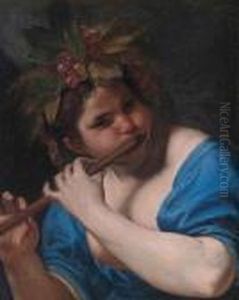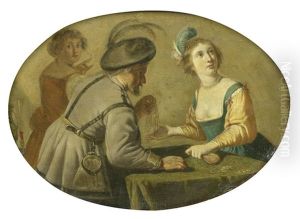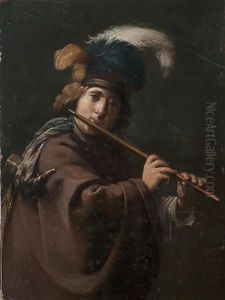Jan Van Biljert Paintings
Jan van Bijlert was a Dutch painter who was born in Utrecht in the late 16th century, around 1597/1598. He was an important figure in the Dutch Golden Age of painting, a period in the 17th century when Dutch art was highly acclaimed for its great attention to detail, realism, and innovative use of light and shadow.
Van Bijlert's early life is not well-documented, but it is known that he was initially trained by his father, a glass painter. He then went on to become a student of Abraham Bloemaert, who was one of the leading Utrecht artists of the time. Bloemaert's influence on van Bijlert is evident in his early works, which share a similar style of detailed realism and use of color.
In 1618, van Bijlert joined the Utrecht Guild of St. Luke, which was the city's painters' guild. This suggests that by this time, he had established himself as a professional artist. Like many of his contemporaries, van Bijlert traveled to Italy, and he is thought to have lived in Rome for a few years. This stay had a significant impact on his style; during this period, he came under the spell of Caravaggisti, followers of the famous Italian painter Caravaggio, who were known for their dramatic use of chiaroscuro and realistic depictions of figures.
Upon returning to Utrecht around 1624, van Bijlert started incorporating the Caravaggesque style into his work. He became one of the leading Utrecht Caravaggisti, alongside artists like Hendrick ter Brugghen and Gerrit van Honthorst. Van Bijlert's work from this period includes genre scenes, religious subjects, and portraits, characterized by strong contrasts of light and shadow and a more dramatic atmosphere than his earlier paintings.
His later works, however, show a departure from the Caravaggesque approach as he shifted towards a lighter palette and a more classicist style, which was gaining popularity at the time. This was likely an adaptation to the changing tastes of his clientele. Despite this stylistic evolution, van Bijlert remained successful and well-respected in Utrecht throughout his career.
Jan van Bijlert died in 1671 in Utrecht. Although he was quite successful during his lifetime, his reputation was somewhat overshadowed by the more famous Utrecht Caravaggisti, and his work was less well-known until a renewed interest in Caravaggisti painters emerged in the 20th century. Today, his works are appreciated for their contribution to the Dutch Golden Age and are held in various museum collections around the world.


